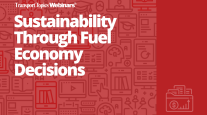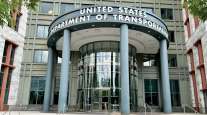Senior Reporter
GHG Rule Estimated to Cost $25 Billion but Offers $170 Billion in Savings
Federal regulators said their proposed Phase 2 greenhouse-gas emissions rule for trucks will cost the industry around $25 billion upfront but will produce a stream of savings worth $170 billion to truck owners, who after 2021 will need to buy less diesel fuel.
The overall benefits for the U.S. economy will total about $230 billion, according to a cost analysis of the jointly proposed rule from the Environmental Protection Agency and National Highway Traffic Safety Administration.
Model year 2027 tractors will cost up to $12,400 more and trailers as much as $1,230 more than those made in 2017, after the Phase 1 requirements are fully rolled out.
“While costs are higher than for Phase 1, benefits greatly exceed costs, and payback periods are short, meaning that consumers will see substantial net savings over the vehicle lifetime,” the proposal said.
The agencies estimate that tractors and trailers purchased in 2027 will have a two-year return on investment through fuel savings.
In terms of environmental benefits, the agencies estimate the proposal would cut carbon dioxide and other GHG emissions by about 1 billion metric tons, thereby saving about 1.8 billion barrels of oil over the lifetime of the generation of vehicles.
Margo Oge, former director of the EPA’s Office of Transportation and Air Quality, said she thinks the government’s cost projections are accurate.
“Given the potential benefits that we get by adding these additional costs is in my view a pretty good deal for the industry,” Oge told Transport Topics.
The American Truck Dealers disagreed. The group is concerned that the cost projections could be higher since they are based on untested technologies.
“There are major compliance costs with well-intended regulations like these. But if the government underestimates these costs, it will underestimate the negative impact on consumers, jobs and a still fragile economy,” ATD spokesman Jonathan Collegio said.
Mike Meehan, vice president of sales for business analytics firm Fleet Advantage, disagreed, saying higher truck prices won’t scare away new buyers. His customers already are seeing significant fuel cost reductions from the Phase 1 rule.
Meehan said he thinks the model year 2027 payback could be much shorter than two years.
“The cost to get these trucks into compliance is the giant unknown, of course,” Meehan told TT. “But we think the payback is immediate. We think they’re being conservative with that number, unless fuel drops very low in price.”
The two federal agencies’ 971-page regulatory impact analysis on the proposal notes the rule could generate some collateral effects.
One is the effect improved fuel efficiency could have on truck vehicle miles traveled — known as “VMT rebound.”
Lower costs for travel have the potential to increase traffic and could spur such societal costs as more highway noise, congestion and crashes, according to the analysis.
“Ultimately, fuel cost savings could ripple through the entire economy, thus increasing demand for goods and services shipped by trucks, and therefore increase [truck miles traveled] due to increased gross domestic product,” the analysis said.
For example, truck operators may pass on the fuel savings to their customers by trimming freight rates, which in turn could stimulate even more demand for trucking services.
The analysis also said that customers might order more frequent shipments or choose products that require longer shipping distances, while freight carriers might divert some shipments to trucks from other shipping modes such as rail or air.




